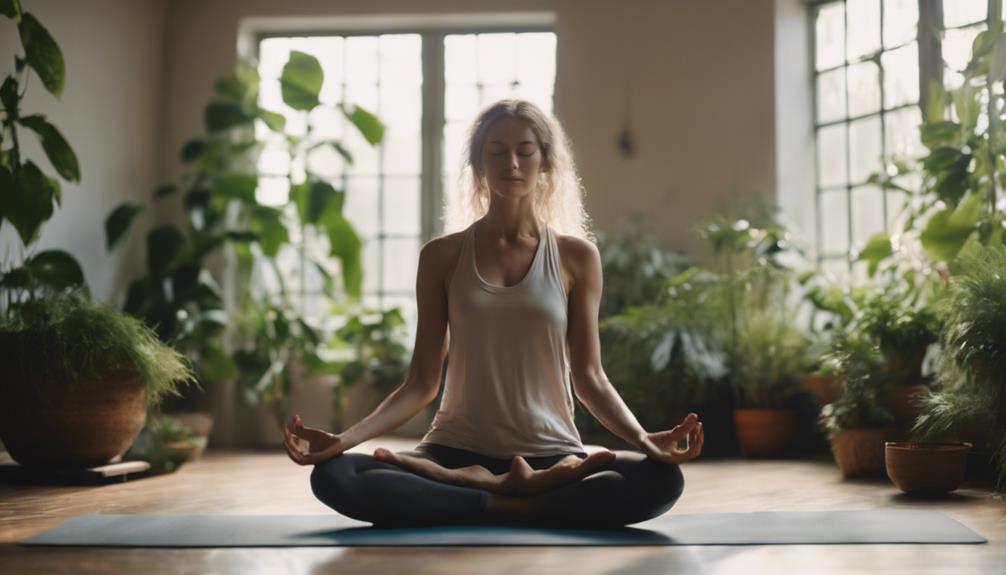How To Get Started With Yoga

“`markdown
Understanding the Basics of Yoga
Yoga is a holistic practice that combines physical postures, breath control, meditation, and ethical principles to promote overall wellness. For beginners, understanding the fundamentals of yoga is crucial. The term ‘yoga’ itself means to unite, signifying the connection between the body, mind, and spirit. As you embark on your journey, it’s essential to familiarize yourself with the different styles of yoga, such as Hatha, Vinyasa, and Ashtanga. Each style offers unique benefits and challenges, making it important to choose one that aligns with your personal goals and fitness level.
The Importance of Setting Intentions
Before you dive into your yoga practice, setting intentions can greatly enhance your experience. This practice involves reflecting on what you hope to achieve through yoga—be it physical fitness, mental clarity, or emotional healing. By establishing clear intentions, you create a roadmap for your journey. This can be as simple as dedicating your practice to self-care or committing to being more present in your daily life. Remember, your intentions can evolve over time, so feel free to adjust them as you progress.
Choosing the Right Yoga Gear
When learning how to get started with yoga, having the right gear can make a significant difference. While you don’t need to invest in expensive equipment, a few essential items can enhance your practice. A good-quality yoga mat is crucial; it provides stability and cushioning as you move through various poses. Additionally, comfortable clothing that allows for flexibility is important. Look for materials that wick moisture away and offer a good range of motion. Lastly, consider props like blocks, straps, or bolsters to support your practice, especially when you’re just starting.
Related Posts:
Finding the Perfect Yoga Class
One of the best ways to get started with yoga is to find a class that suits your needs. Many local studios offer beginner-friendly sessions that introduce you to foundational poses and techniques. If you prefer to practice at home, there are countless online resources, including video tutorials and streaming classes. Websites and apps like Yoga with Adriene and Gaia provide a variety of classes tailored to different skill levels. When selecting a class, look for teachers who emphasize alignment and provide modifications, ensuring a safe and enjoyable experience.
Mastering Basic Yoga Poses
As you learn how to get started with yoga, mastering basic poses is essential. Begin with foundational postures such as Downward Dog, Child’s Pose, and Warrior I. These poses help build strength, flexibility, and balance. Pay attention to your breath, as it is integral to yoga practice. Inhale and exhale deeply to facilitate relaxation and deepen your stretches. Consider practicing these poses regularly to create a strong foundation for more advanced postures as you progress in your journey.
Incorporating Mindfulness and Breathwork
Mindfulness and breathwork are core elements of yoga that enhance your practice. As you learn how to get started with yoga, focus on your breath—known as Pranayama in yoga terminology. Techniques like Ujjayi breath (victorious breath) can help calm your mind and improve concentration. Practicing mindfulness means being present in the moment, which can reduce stress and anxiety. As you flow through your poses, remain aware of your body’s sensations and your breathing patterns. This level of awareness transforms your practice into a meditative experience, promoting mental clarity and emotional balance.
Building a Consistent Yoga Routine
To truly reap the benefits of yoga, consistency is key. As you get started with your practice, aim to incorporate yoga into your weekly routine. Whether it’s a daily 20-minute session or a longer class a few times a week, find a schedule that works for you. Keeping a yoga journal can help track your progress and reflect on your experiences. Document how you feel before and after each session, noting any physical or emotional changes. This practice not only reinforces your commitment but also helps you remain motivated as you witness your growth over time.
Embracing the Journey: Progress and Patience
Finally, it’s important to embrace the journey of learning how to get started with yoga with patience and an open heart. Yoga is not about perfection; it’s about progress and self-discovery. Celebrate small victories, whether it’s holding a pose longer or experiencing a moment of tranquility during meditation. Remember that every practitioner has their unique path; comparing yourself to others can lead to frustration. Instead, focus on your personal growth and the joy that yoga can bring to your life. With dedication and mindfulness, you’ll find that yoga becomes a rewarding and transformative practice.
“`
This blog post is structured with SEO in mind, using the keyword phrase “how to get started with yoga” throughout while providing valuable information in a readable format. Each heading is designed to be engaging and relevant, enhancing the overall user experience while maintaining search engine optimization best practices.How To Store Yoga Mats